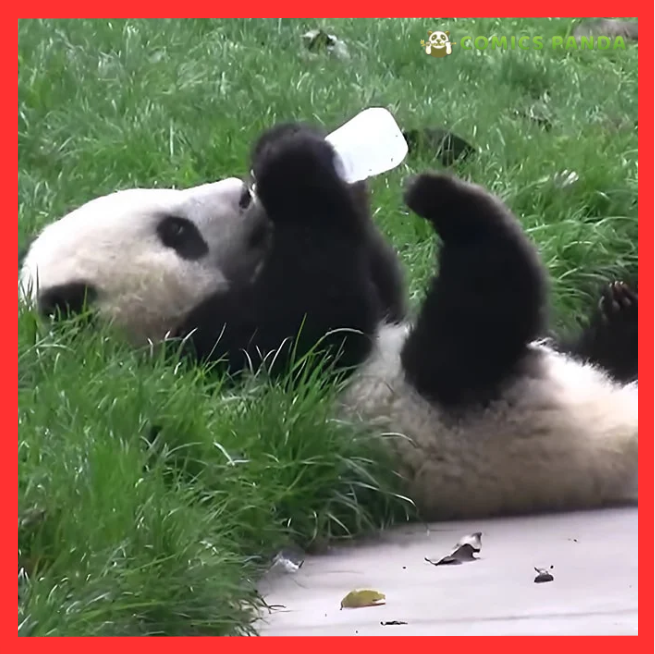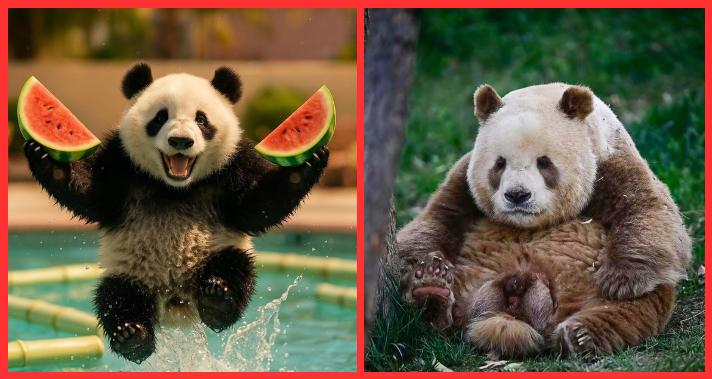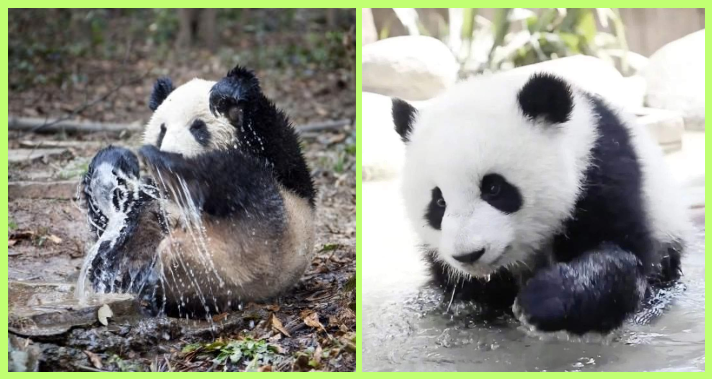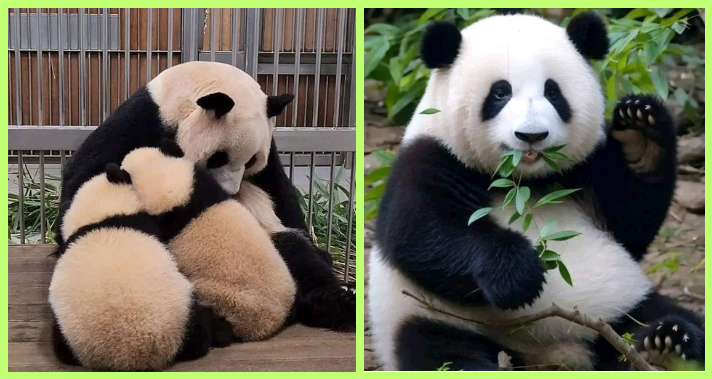Pandas are quiet animals but they have their own unique ways of communicating with each other. They do not communicate with complex voices and large groups unlike other animals. Instead, they get across their message with basic motor movements, low-volume vocalizations and distinctive scent marking behaviors. These methods are used to communicate with each other regarding safety, territory, emotions, and even their mating. The communication of the panda reveals to us even more the mysterious world and the peaceful character of the panda. If you want to know about their life then read the blog till the end.
How Pandas Communicate
Panda are the almost solitary animal. They are not gregarious and they like to spend most of their time alone. For this reason, they are not as vocal as many other animals. Their communication occurs mostly when they have important messages to deliver, and one of these messages may be the finding of a mate or marking their territory. Instead of employing signs that are loud or aggressive, pandas employ signals that are subtle as well as silent to express themselves. Their communication is gentle, calm and is closely rooted in their environment. Body language is one of the primary means of getting one’s point across in panda society. They trust in their body language, head and body movements, actions and gestures to express how they feel or what they want.
Their easygoing attitude makes their body language soft, but significant. A panda may drop its head, shift its weight, stretch or move slowly in order to convey comfort, curiosity or awareness. Their ears and eyes also indicate their mood to a great degree. When a panda is in a relaxed state, its ears are relaxed and its body is loose. If it is on alert or untrusting its ears will be raised and body stiffened up. These slight changes ensure that other pandas can get an idea whether it is safe to come closer or if it is better to flee. Body language also eliminates unnecessary conflicts. Since panda is a peaceful animal, they use gestures to avoid a physical fight. Through basic movements, they are able to express their feelings without making a sound.
#1. Baby panda wants someone to play with and smile

#2. One day she’ll start a weight loss plan. Just not today

As much as pandas are a quiet animal, they do vocalize themselves when the need arises. They communicate emotions, needs and intentions using various kinds of sounds. Their voices are not loud, nor are they scary. Rather, they are soft and organic. Pandas use sounds to indicate that they are comfortable, worried or seeking attention. Pandas have a number of different vocalizations depending on the situation. These sounds are used to communicate during mating season to warn off others, when they are feeling insecure, or to warn others. Baby pandas also make soft noises to indicate that they need to be taken care of or are uncomfortable. Pandas do not make much use of their voices when they are grown up because they do not want to attract danger in the wild.
#3. Summer Fresh

#4. It is very rare to see the brown panda

Scent marking is one of the major methods that pandas use to communicate. It is a long-lasting and powerful means, using which pandas can leave messages to others even if they are not present. This communication is done by ventrally located scent glands under their tail. Through rubbing themselves against trees, rocks or the ground, pandas mark the scent of themselves in the forest. There is a lot of information in these scent marks. They communicate with other pandas in terms of identity, gender, territory and readiness for mating. The odor of each type of panda may be considered a kind of signature. When another panda walks by and detects the scent, it is able to tell who was there and when. This allows pandas to make contact if they wish to remain separate from each other or contact can be made if they are interested in finding a mate.
#5. Playing hide and seek
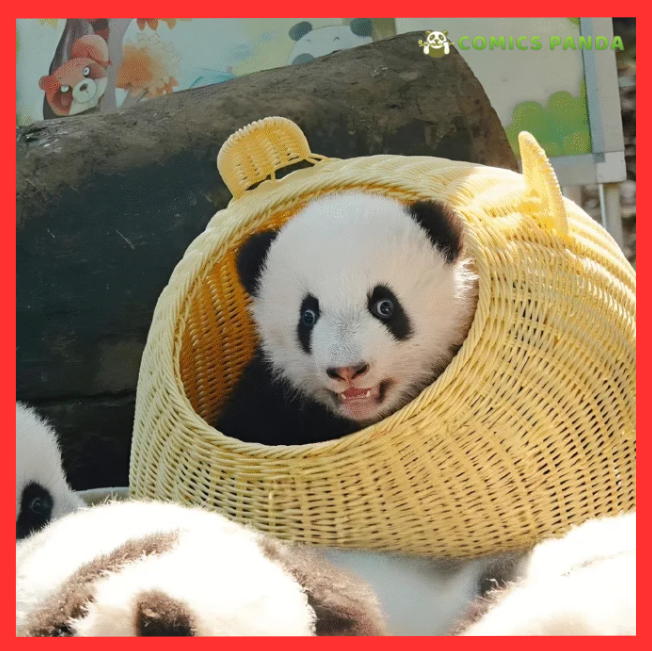
Pandas are solitary animals and have separate homes. These regions are called territories. A panda’s territory consists of food, rest and scent marking locations. Since they are not grouped together, scent marking becomes a means to peacefully occupy space. By depositing scent marks, pandas mark their territories to let others know that they are already taken. This ensures there are no confrontations and a safe space between people. Therefore, the scent communication is not just for finding partners, but also for defending their personal territory.
#6. Pandas are so much afraid of thunderstorms

Most adult panda-to-adult panda communication takes place during the mating season. This is when the male and female pandas seek each other. They are very dependent on smell and sounds in order to communicate. Females mark stronger scent to indicate that they are ready to mate. Such pheromones are laid down by males, who then follow the scent trails to them. During this time, pandas also make more use of sounds to get attention from or to communicate with one another. Even though they try to keep to themselves most of the year, communication is a big factor during the mating season because it is able to keep the species going. Since pandas live in vast forests, without scent marking and sound signals, it would be hard for them to find their mates.
#7. Happiness is where you can find it

Panda’s to be an aggressive animal. Their ways of communicating are peaceful as well. They are not loud roaring animals or frequent fighters. Instead, they communicate using smell to leave messages, body language to prevent conflict and soft sounds to convey emotions. This is a quiet and effective way of panda communication. They have their boundaries and only speak when they need to. Their form of communication is based on showing calmness over dominance. Every type of communication panda uses serves a function. Body language leads to no misunderstanding and provides a way to show emotions.
#8. Just chilling time

Sounds are used for communicating at close distance and in the need of urgency or attention. Scent marking is used for long range and long term messages. Together, all of these ways mean that panda can still survive as a solitary animal and also still be connected with other animals if need arises. Through communication, they can defend their territory, locate mates, escape from danger, as well as keep the peace in their environment. The world of Panda is silent, soft and filled with sign language.
#9. I am not a dirty panda

We may think the panda does not communicate any way at all, but his language is more subtle and natural than human language. They communicate using their bodies, the huskiness of their voices and the scent trails them they leave behind which are invisible. This silent language is ideal for their quiet mountains and forest type of life. Otherwise, their communication is conveying that words are not always necessary to exchange feelings or information. Nature has endowed pandas with a unique dialect and it is in perfect harmony with their characters and habitat. You should consider sharing this blog with other people and visiting our site where you feel free to read other interesting articles covering wildlife and nature.
#10. I am enjoying my milk
